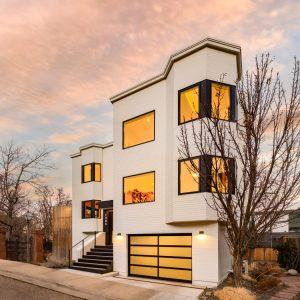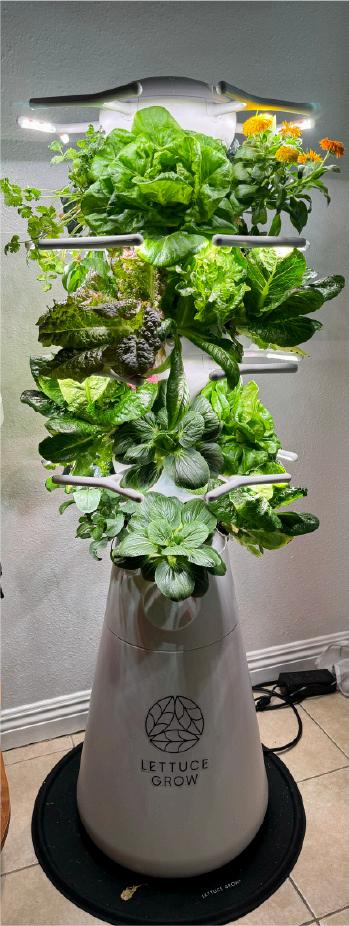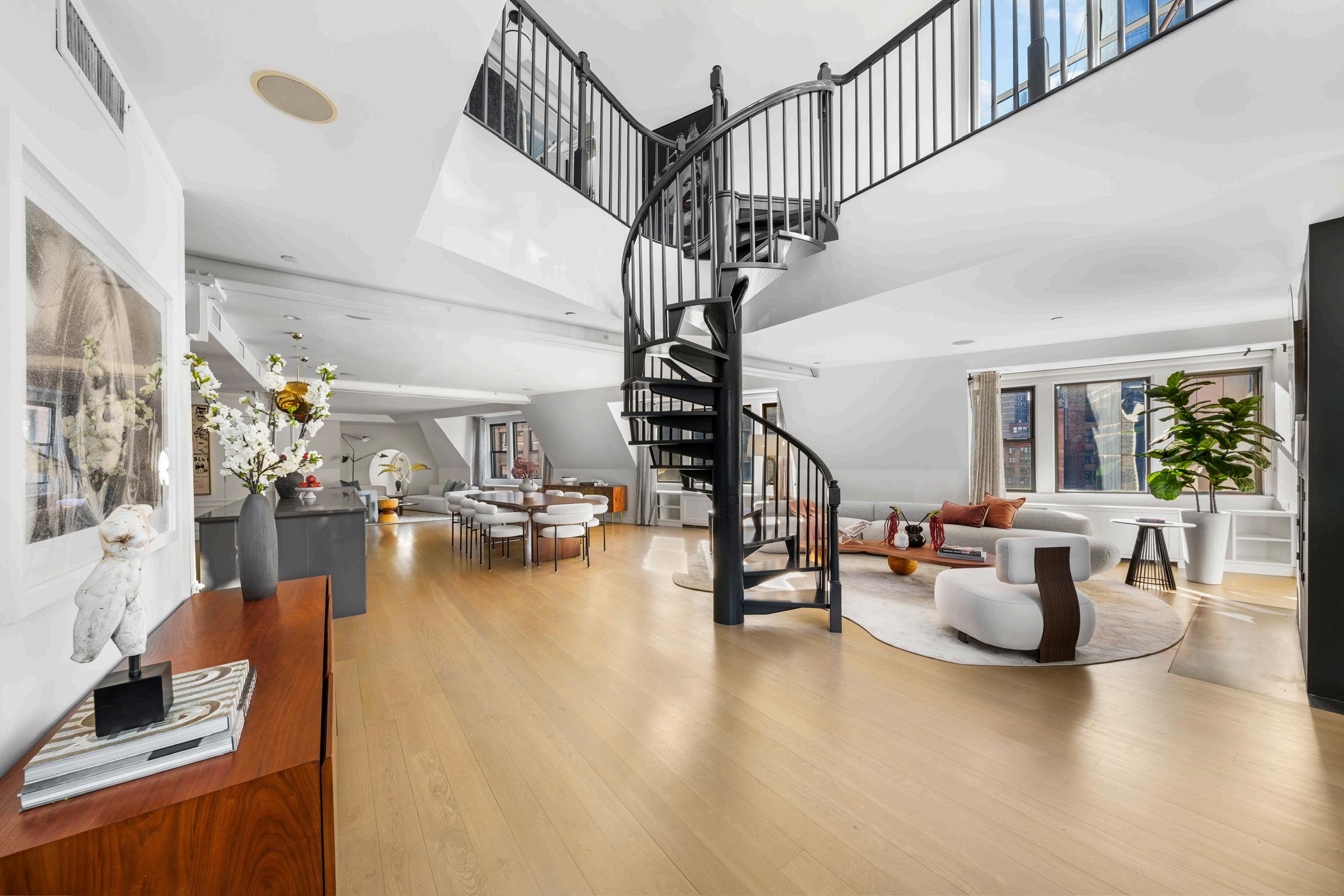






Recently we were invited to join an elite group of realtors that are part of a network called REALM. The REALM’s community is globally-minded and consistently informed through colleagues and business leaders to ensure we stay ahead of the needs of the marketplace. Real estate is visceral. It’s something that is experienced and felt. While technology and other factors may be changing how we live, the REALM difference is that the membership continues to define new ways to innovate and optimize the very human experience of real estate for our discerning clientele.
The luxury real estate market is an influential segment of the broader real estate industry. While this segment of the market is resilient, it is also fickle and not immune to macroeconomic factors, evolving consumer preferences, and technological advancements. As we look ahead to the next 12 months, several trends and projections emerge that are shaping the future of luxury real estate. This white paper delves into these trends, provides a comprehensive outlook for industry stakeholders and highlights some of the ways that REALM members are on the forefront of these advancements.

The luxury real estate market is heavily influenced by global economic conditions. In 2023, the world witnessed a robust recovery from the COVID-19 pandemic, but lingering uncertainties such as geopolitical tensions, inflation, and fluctuating interest rates continue to impact economic stability.
Inflation and Interest Rates: According to the International Monetary Fund (IMF), global inflation moderated from 8.8% in 2022 to 6.6% in 2023 and is expected to decrease further to 4.3% in 2024. Central banks, particularly in the United States and Europe, are expected to maintain higher interest rates to curb inflation, which could affect borrowing costs for luxury property buyers.
Geopolitical Tensions: Ongoing geopolitical tensions, such as the conflict in Ukraine and trade disputes between major economies, continue to create market volatility. Wealthy individuals may seek to diversify their asset portfolios, including investments in luxury real estate, as a hedge against such uncertainties.


The demand for luxury real estate remains robust, driven by several factors:
Wealth Creation: Despite economic challenges, global wealth continues to grow. According to the 2023 Global Wealth Report by Credit Suisse, the number of millionaires worldwide is expected to increase by 40% over the next five years, reaching 84 million by 2024. This surge in wealth will fuel demand for luxury properties.
Supply Constraints: High-end real estate markets in prime locations face supply constraints due to limited land availability and stringent zoning regulations. This imbalance between demand and supply is likely to sustain upward pressure on property prices.
Sustainability has become a paramount concern for affluent buyers. Eco-friendly features and sustainable practices are no longer optional but essential for luxury properties.
Green Certifications: Properties with LEED (Leadership in Energy and Environmental Design) certification or similar credentials are increasingly sought after. According to the U.S. Green Building Council, LEED-certified buildings saw a 20% increase in market value compared to non-certified buildings in 2023.
Energy Efficiency: High-net-worth individuals are prioritizing energy-efficient homes. Features such as solar panels, smart home systems, and energy-efficient appliances are becoming standard in luxury properties. A report by the National Association of Realtors (NAR) indicates that 61% of buyers in the luxury segment consider energy efficiency a critical factor in their purchase decision.




“There are only a handful of $5 million+ homes on the market at a time, as luxury homes sell as quickly as they’re built throughout the country But Boulder architects and developers are trying to meet the rising demand for luxury homes, as they incorporate some of the customized and innovative features that are expected by luxury homebuyers. Current trends in the luxury home market include green homes and smart homes, which may sometimes include innovative features like fingerprint key entry
Incorporating the beauty of Boulder into the design of new luxury homes also translates to building green homes. While many cities across America are interested in the LEED certification trend where homeowners voluntarily have their property graded for its green design Boulder already has high standards that make LEED certification seem unnecessary to residents One of the environmentally conscious trends is a rise in the popularity of more glazing on windows. Not only do they create a bright feel throughout the home and give homeowners access to Boulder’s beautiful views, but high performance glazed windows also lower the energy costs and carbon footprint of a home by keeping it heated throughout the winter Here in sunny Boulder, expansive windows, along with solar panels, are a great use of one of our greatest natural resources ”
JENNIFER EGBERT, BOULDER, CO | milehimodern


The integration of advanced technologies in luxury homes is transforming the market. From smart home automation to virtual reality (VR) tours, technology is enhancing the buying experience and property management.

We started using 3D virtual reality tours about 7 years ago While not a true tour of a home, these technologies give us the ability to showcase homes in a way that photos and videos Buyers are using real estate portals to view homes and explore markets Our job is to ensure that our client’s home get premium exposure on every available channel Our experience allows us to be on the leading edge of new technologies to help us market and sell the homes we list, and help buyers find what they are looking to buy
2025, growing at a CAGR of 25% from 2020 to 2025 (Research and Markets). Luxury homes equipped with integrated systems for security, lighting, climate control, and entertainment offer unparalleled convenience and appeal.
Virtual Reality: The use of VR and augmented reality (AR) in real estate marketing is revolutionizing property viewings. High-net-worth buyers can now explore properties remotely, making international purchases more feasible. A survey by Coldwell Banker found that 77% of luxury homebuyers prefer VR tours before making a purchase decision.



“Virtual reality (VR) is revolutionizing the luxury real estate market by offering an immersive experience that connects clients and properties globally. VR aids not just brokers but also developers, interior designers, and architects in enhancing design and marketing strategies. By providing a realistic preview, VR increases consumer confidence and boosts pre-construction sales This cutting-edge technology facilitates organic, two-way interactions, allowing buyers to experience a luxury property from anywhere in the world, thus confirming the lifestyle they desire VR's ability to humanize digital connections makes it an invaluable tool in luxury real estate ”
KAI IOH, TREND LEADER KAILUNA-KONA, HI | Compass




Health and wellness have become central to the luxury lifestyle, influencing real estate design and amenities.
Wellness Communities: Developments that offer wellness-centric amenities such as spas, fitness centers, and meditation gardens are gaining popularity. According to the Global Wellness Institute, the wellness real estate market grew from $148 billion in 2017 to $275 billion in 2020, and it is expected to continue expanding.
Biophilic Design: Incorporating natural elements into home design, known as biophilic design, is on the rise. This approach not only enhances aesthetic appeal but also promotes mental and physical well-being. The International Journal of Environmental Research and Public Health highlights that biophilic design can reduce stress and improve cognitive function.

JEFF AND EVA CHEN, BURLINGAME, CA | Compass
“As specialists in Wellness-Oriented Design, we love how wellness principles can transform real estate and lives The growing demand for wellness communities with amenities like spas and meditation gardens shows how central well-being is to luxury living My family's 700-acre organic farm in Paso Robles reflects our commitment to sustainable living And my stage 2 cancer diagnosis this year deepened my appreciation for health-supportive environments. With three kids two heading to college and one starting high school we also know how important it is to nurture family well-being Our expertise in biophilic design creates harmonious spaces that promote health, driving the booming wellness real estate market.”





“The wellness economy has been growing twice as fast as the global economy and is not projected to slow down reaching 8.47 trillion by 2027. Of the 11 sectors that make up this total, Wellness Real Estate is the largest at 17 4%, this sector has been the fastest growing since the pandemic and is not expected to slow down, with an estimated market share of over $400 billion ”
For 2024, these four notable trends underscore the demand for wellness in luxury living:
Demand for healthy building materials and non-toxic home environments.
Proximity to natural spaces and community wellness facilities. Biophilic Design
Integration of fitness and wellness amenities like home gyms, pools, and meditation spaces.
Smart home technologies for health monitoring and environmental control.

The pandemic has reshaped geographic preferences for luxury homebuyers, with a growing interest in suburban and rural areas.
While prime urban locations remain desirable, there is a noticeable shift towards suburban and rural properties that offer more space and privacy. The Urban Land Institute reports a 50% increase in luxury home sales in suburban areas in 2023 compared to prepandemic levels.


“PAIGE DOOLEY, WINNETKA, IL | Compass
The geographic migration from Chicago to its affluent North Shore lakefront suburbs has become a prominent trend post-pandemic Factors such as escalating urban living costs, the allure of spacious homes with larger properties, and access to top-tier educational institutions are driving this shift Families and individuals are increasingly drawn to the benefits of North Shore living, including larger residences, serene neighborhoods, lakefront beaches and parks, and a strong sense of community, all while maintaining close proximity to the city.


Additionally, empty nesters, who previously sold their large primary residences to purchase homes in other retirement or high-quality-of-life markets, have shifted from buying second-home condos in the city to purchasing smaller houses in the North Shore This change is driven by the same reasons, with the added desire to be near family. Both baby boomers and millennials are now competing for the same houses.
As a result, the North Shore suburbs have experienced a surge in demand, with a continued lack of supply leading to significant price increases.
Winnetka Glencoe
Kenilworth
Wilmette
Northfield
*As of 7/21/24
“
$1,738,000
$1,600,000
$1,487,000
$1,001,000
$995,000
$1,208,000
$853,000
$1,245,000
$690,000
$662,000

The pandemic has significantly influenced the Dallas real estate market, prompting a pronounced shift from urban to suburban living According to the Urban Land Institute, luxury home sales in suburban areas have increased by 50% in 2023 and 2024 compared to pre-pandemic levels Buyers now prioritize space, privacy, and work-from-home flexibility
Suburban areas around Dallas, such as Frisco, Prosper and Fairview, have seen a surge in demand, driving up property values and accelerating development. This trend is expected to continue, making suburban markets attractive investments for future homebuyers seeking a balanced lifestyle with city amenities and suburban tranquility.”
HIMEL, DALLAS, TX | Compass


Second Homes and Retreats: High-net-worth individuals are increasingly investing in second homes and retreat properties in scenic locations. The demand for luxury homes in areas such as Aspen, the Hamptons, and the French Riviera has surged. Knight Frank’s 2023 Wealth Report indicates a 30% increase in enquiries for second homes compared to the previous year.
“Tourism trends are significantly influencing the real estate market in destinations like Aspen-Snowmass. Travelers now seek unique, luxury accommodations, driving up demand for vacation rentals and second homes. This demand boosts property values and prompts investment in top-tier infrastructure and amenities Moreover, our clients prefer properties that offer full-service experiences similar to five-star hotels, including concierge services, housekeeping, and personalized touches. Understanding these trends allow real estate brokers in these markets to truly cater and provide exceptional service that extends beyond the transaction.”
SUSAN STONE-CHEN, ASPEN, CO | SSC & Company


Affluent buyers are seeking highly personalized and customized homes that reflect their unique tastes and lifestyles.
Bespoke Design: Custom-built homes with bespoke designs and tailor-made interiors are in high demand. Buyers are willing to pay a premium for properties that offer personalized features and exclusive craftsmanship.
Flex Spaces: The rise of remote work and changing lifestyles have increased the demand for flexible spaces within homes. Luxury properties now feature adaptable spaces such as home offices, gyms, and entertainment rooms. A report by Savills notes that 68% of luxury homebuyers consider flexible living spaces a top priority.

MARY SLATTERY, HAMPTONS, NY | Corcoran
In the Hamptons market which is comprised of predominantly multiple homeowners in several different luxury markets, new construction or newly renovated homes being sold fully designer furnished are definitely the trend The process to build or even renovate a home is extremely time consuming Time is a precious commodity in this market as most owners use their homes seasonally or year round only on weekends and holidays.
Totally turnkey homes with all the bells and whistles attract higher numbers and quicker sales And of course location is paramount In or near the quaint villages like Southampton Village, East Hampton Village or Sag Harbor are the locations most desired by the majority of buyers. A stroll along any Main Street is a wonderful way to decompress and feel connected to life.”

“We have seen a significant increase in demand for flex spaces within homes amongst the luxury segment of the market What started with the trend of remote work through the pandemic has continued as our market shifts from a vacation market to a second primary home market Existing homeowners have upsized their properties to accommodate longer stays and more frequent visitors, and flex spaces for extra bodies and an increase in utility have become a criteria as important as location and community amenities For our first-time luxury buyers that may be interested in the returns a high-end rental can provide, the flex space is perfect for the discerning rental guest with a broad range of needs for their stay From guests traveling with support staff, to a bunk room to accommodate the multi-generational families who now travel more together, to those of us who still need to stay connected to the office while the family is enjoying the pool or the community activities, flex rooms often make the difference in the final decision ”




The North American luxury real estate market continues to thrive, driven by strong demand and limited supply in key markets.
United States: Major cities like New York, Los Angeles, and Miami remain hotspots for luxury real estate. The demand for waterfront properties and estates with extensive land is particularly high. According to Zillow, the median home value for luxury properties in these cities increased by 12% year-over-year in 2023.
“The current trend in the luxury market is a shift toward a more traditional lifestyle and therefore homes that have provenance or exude a feeling of rich history This is an influence of the pandemic era where people wanted more compartmentalized living spaces, and the trend appears to have staying power Out are the stark, cold, contemporary designs Today's luxury buyers seek depth and meaning in their purchases. They also want more grounds, gardens, and rolling lawns, and privacy is of paramount importance All of this is also reflected in current media trends and pop culture, emphasized by hit series such as Succession and White Lotus.”
SALLY FORSTER JONES, LOS ANGELES, CA | Compass


Canada: Toronto and Vancouver are prominent luxury markets, attracting both domestic and international buyers. Despite government measures to cool the market, such as foreign buyer taxes, prices in these cities have seen steady growth. The Canadian Real Estate Association reports a 9% increase in luxury home prices in Toronto in 2023.

“Canada's luxury real estate markets in Toronto and Vancouver continue to thrive due to high demand, limited supply, and foreign investment. Toronto's 2023 luxury home prices rose by 9%, driven by a strong economy, continuous urban development, and market confidence. Vancouver's price growth is influenced by geographic constraints, high quality of life, international investment, and a robust economy in sectors like technology and film Both cities have shown resilience and steady growth despite government measures like foreign buyer taxes, underscoring the robust demand and attractiveness of these markets ”
RICHARD SILVER, TORONTO, ON | Sotheby's International Realty Canada


Europe's luxury real estate market is characterized by historic properties, prime urban locations, and scenic retreats.
United Kingdom: London remains a key market, with a strong demand for prime central properties. Brexit uncertainties have settled, and international buyers are returning. Knight Frank’s 2023 Prime Central London Index shows a 6% annual increase in luxury home prices.
France: Paris and the French Riviera continue to attract high-net-worth individuals. The allure of historic châteaux and modern villas with stunning views is undeniable. Sotheby's International Realty reports a 15% increase in luxury property transactions in the French Riviera in 2023.
“Navigating the world of luxury real estate for ultrahigh-net-worth individuals involves more than expertise it requires a deep understanding of their goals and the ability to guide them through Europe’s most exclusive properties. From the historic charm of London’s Mayfair to the sophisticated elegance of Paris’s 7th Arrondissement, and from the scenic vineyards of Italy to Spain’s premier enclaves, I am dedicated to making dreams a reality. Operating from Washington, DC, I focus on achieving my clients' objectives, fostering valuable relationships, and elevating their real estate ventures My membership in REALM Global enhances this journey by providing exceptional networking opportunities and facilitating successful outcomes ”
JOHN ERIC, WASHINGTON, DC | Compass




The Asia-Pacific region is witnessing rapid growth in luxury real estate, driven by economic expansion and wealth creation.
China: Major cities like Beijing and Shanghai are experiencing strong demand for luxury properties. Despite government regulations to curb speculative buying, the market remains buoyant. Juwai IQI’s 2023 report highlights a 10% increase in luxury home prices in Shanghai.
Australia: Sydney and Melbourne are top destinations for luxury real estate, attracting both local and international buyers. The demand for waterfront properties and luxury apartments in these cities is on the rise. CoreLogic reports a 7% increase in luxury property values in Sydney in 2023.
The Middle East luxury real estate market is characterized by opulent developments and high-profile projects.
United Arab Emirates: Dubai and Abu Dhabi lead the region with iconic luxury properties. Dubai's real estate market has rebounded strongly post-pandemic, driven by investorfriendly policies and high-profile events like Expo 2020. A report by Property Finder indicates a 14% increase in luxury home sales in Dubai in 2023.
Saudi Arabia: The Vision 2030 initiative is driving significant investment in luxury real estate, with developments such as NEOM and the Red Sea Project attracting global attention. Knight Frank estimates that the luxury property market in Saudi Arabia will grow by 20% over the next year.




“Dubai’s real estate market in 2024 continues to showcase its allure and resilience, characterized by a significant surge in both transaction volumes and values The first quarter of 2024 saw a record-breaking 37,154 sales transactions, marking a 20% year-on-year increase, with the total value reaching AED 109 85 billion, up 23 3% from the same period in 2023 This growth is driven by the strong performance of both off-plan and existing properties, reflecting robust investor confidence and market liquidity
Several factors contribute to this upward trajectory Government initiatives, such as long-term residency visas and business-friendly reforms, have significantly bolstered investor confidence. Additionally, the integration of cutting-edge technology in property management and sales has enhanced customer experiences and operational efficiencies. Dubai’s focus on luxury living, with an emphasis on branded residences in prestigious areas like Palm Jumeirah and Downtown Dubai, continues to attract high-net-worth individuals seeking opulent lifestyles and significant capital appreciation
Despite Dubai’s thriving real estate scene, many residents are now opting for Abu Dhabi, drawn by its more affordable housing options, quieter lifestyle, and growing economic opportunities. Areas like Al Reef and Khalifa City offer competitive rental prices and a balance between urban amenities and tranquility, making Abu Dhabi an increasingly attractive alternative ”
KELLY ROBINSON, NEW YORK, NY | Compass



The next 12 months in luxury real estate are set to redefine the market. With evolving trends in sustainability, technology, wellness-focused designs, and shifting preferences in prime locations, the landscape will offer new opportunities for those seeking exclusivity and personalized living experiences. Despite economic uncertainties, the enduring demand for luxury properties, fueled by wealth creation and generational transfers, will continue to drive the market forward.
In this rapidly evolving landscape, understanding these trends is crucial for making informed decisions that align with your vision of luxury living. The luxury real estate market demands guidance from the most trusted advisors—those who possess a deep understanding of these shifting dynamics. REALM's members, comprising elite agents, developers, and strategic partners, are uniquely positioned to offer the expertise and insights needed to navigate this landscape with confidence and precision.


DR DANIEL LANGER, CEO OF EQUITE
What truly excites me about REALM is its role not just as a leader, but as a trailblazer in the luxury real estate sector. REALM is transforming the industry by seamlessly integrating cutting-edge technology with a profoundly human-centered approach This innovative fusion empowers its members to stay ahead of the curve, anticipating and meeting the evolving needs of the world’s most discerning buyers and sellers.
In a market defined by rapid economic shifts, geopolitical challenges, and the growing demand for sustainability and wellness, REALM’s commitment to continuous innovation and personalized service positions its community at the forefront of the industry. The insights and strategies outlined in this white paper underscore REALM's forward-thinking leadership and set the stage for its members to not only navigate but also shape the future of luxury real estate
It is an honor to support the REALM community with the latest in education and luxury insights, and I am confident that together, we will continue to drive the industry forward, setting new standards of excellence and expertise.




membership professionals. By consolidates individuals, insights and introductions, curated events, brands, drive business success, and stay ahead of industry trends.
more thought
